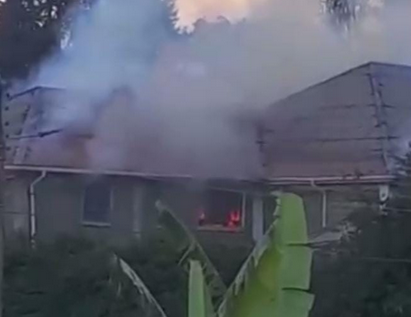

The report by the Association of Kenya Insurers (AKI) reveals a big gap in risk preparedness even as learning institutions continue to experience recurring disasters, particularly school fires that disrupt learning and cause extensive property damage.
Despite the availability of insurance solutions, many schools remain uninsured or underinsured, leaving parents, school communities and the government to bear the burden of rebuilding.
The findings come in the wake of a recent devastating series of school fires that have claimed lives and destroyed property worth millions of shillings throughout the country.
Between January and September last year, the Ministry of Education documented 107 school fire incidents.
This alarming trend culminated in the tragic fire at Hillside Endarasha Academy in Nyeri, which killed 21 students and injured dozens.
In a single day in September, at least ten schools across the Rift Valley, Eastern and Central regions reported fires, prompting a government-ordered safety audit that declared 348 boarding schools unsafe.
Despite the availability of insurance products tailored for schools—including fire and personal accident coverage—the AKI report, based on data from all Kenyan insurance companies between January 1 and December 31 2024 found that only 6,784 out of 46,322 primary and secondary schools have non-motor insurance covers, which is a mare 14.6 per cent.
A total of 2,018 are primary schools (29.75%), 3,422 are secondary schools (50.44%) while 1,344 schools (19.81%) were not classified due to system limitations in some insurers’ data.
“This leaves most schools, their students and their staff vulnerable to financial ruin in the event of a disaster,” AKI said yesterday.
According to AKI, the low uptake of insurance is driven by several key factors including poor risk management where many schools lack basic safety measures like fire extinguishers and proper emergency exits, and failure to maintain updated records, which complicates the underwriting process.
Lack of awareness is another factor with school administrators and boards of management often underestimating the value of insurance, viewing it as a non-essential cost.
“There is a common and dangerous assumption that in the event of a
crisis, the government or parents will bear the cost of rebuilding,” the report by AKI notes.
Public schools are also struggling with budget constraints with no dedicated allocation for insurance with funds being typically prioritised for immediate operational needs like salaries and infrastructure.
AKI has also pointed
to regulatory gaps noting that while
the Ministry of Education's 2008 Safety Standards
Manual provides general guidelines, there lacks a strong mandate for financial
risk protection, contributing to the perception that insurance is
non-essential.
It has since called for a collaborative effort with the Ministry of Education to address these systemic issues. The association has proposed a series of recommendations, including regulatory change, capacity building and product innovation.
Motor insurance for vehicles used by schools has not been factored in the report.
Common non-motor insurance product in schools include fire and perils, group personal accident or student personal accident, WIBA (Work Injury Benefits Act), burglary or theft, all Risks and public liability.
Most insurers (66%) offer standalone policies, 15 per cent offer combined policies, and 19 per cent offer both individualised and combined policy options.
“Improving insurance uptake among schools will require deliberate and coordinated multi-stakeholder action. Our recommendations are based on a collaborative approach with the Ministry of Education and other relevant stakeholders,” AKI said.
The association has developed a risk management template that school administrators and boards can use to determine the risks they face and the mitigation measures, even beyond insurance that they can adopt.
It is also keen on working with the Ministry of Education and learning institutions to design products that combine essential covers such as fire, liability and student personal accident into one simplified policy.
Another plan it to have flexible pricing models, including term-based or instalment premium payment options aligned with school calendars and simplifying proposal forms and insurance documents to encourage ease of understanding and adoption.













